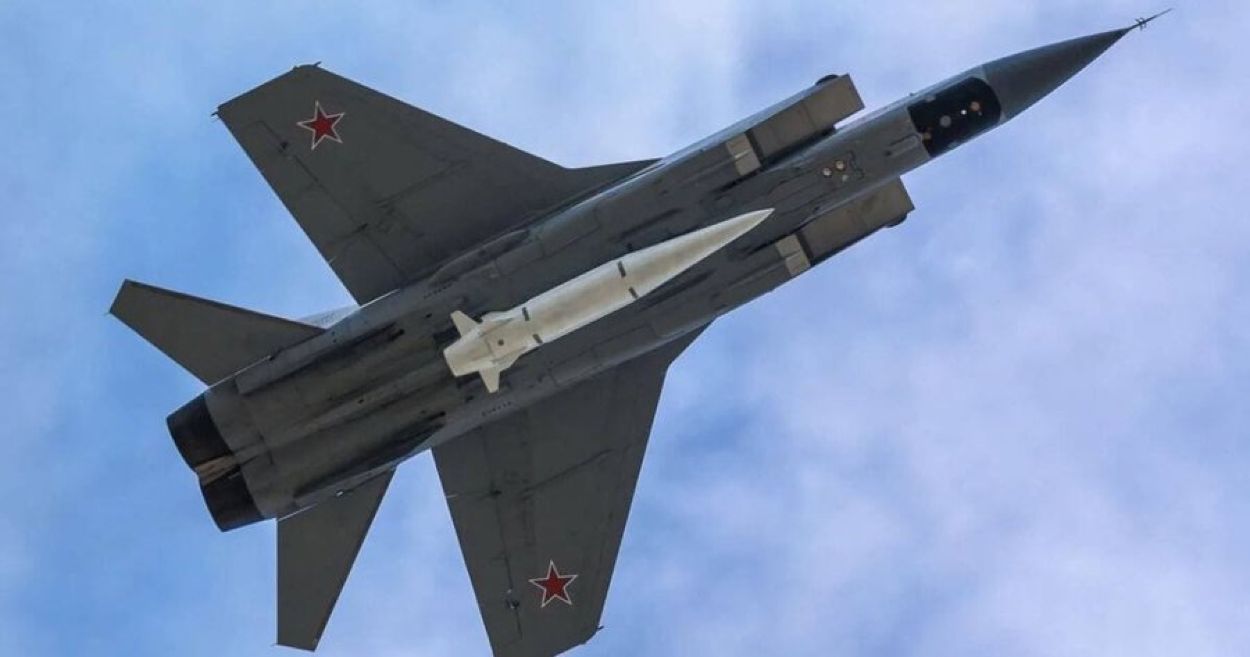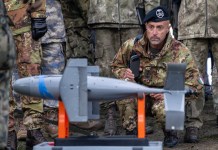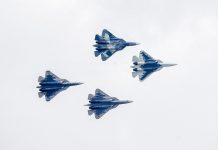The Russian Aerospace Forces recently moved three of its MiG-31K fighter jets armed with Kinzhal hypersonic missiles out of the Machulishchy airfield in Belarus to an unknown location in Russia.
This was first reported by an independent Belarusian military monitoring media outlet Belaruski Hajun and has since been confirmed by the Spokesperson of the Ukrainian Air Force, Yuriy Ihnat. The three aircraft that left Belarus sported registration numbers RF-92215, RF-92445, and RF-95194.
Typically, whenever these MiG-31Ks take off, air sirens start blazing across Ukraine for fear of an imminent air raid. This is because the MiG-31K are carriers of the Kinzhal hypersonic missile that has a range of 2,000 kilometers and would cover entire Ukraine.
However, this time no air sirens were heard blazing across Ukraine. Yuriy Ihnat told Ukrainska Pravda that an air-raid warning is given based on the state of the airspace and the possibility of the employment of weapons. “Russia has the entire country on edge whenever MiGs take off. These fighter jets are probably flying to Russia, so no warning was issued.”
These aircraft have been stationed at Machulishchy since December last year.
❗️According to the Belarusian Hajun, three MiG-31K of the Russian Aerospace Forces are leaving Belarus:https://t.co/OsFl5FOYwp
— Belarusian Hajun project (@Hajun_BY) April 6, 2023
However, a Ukrainian military expert and Ukrainian army reserve, Colonel Roman Svitan, stated that the fighters had been withdrawn from Belarus to pull them back from the frontline, The New Voice of Ukraine reported.
“They will be withdrawing their aircraft from locations close to the border with Ukraine or the front line,” says Svitan.
“They are well aware that we have certain weapons of destruction — like drones. They definitely don’t want to lose their MiG-31Ks, which are few and far between, and they only have a handful of Kinzhal carriers.” Svitan asserted that the Russians hid their warplanes from Ukraine’s killer drones.
Several MiG-31Ks have been stationed at airfields in Belarus since Russian forces started their full-scale invasion of Ukraine. The MiG-31Ks have, however, taken fewer sorties than anticipated. The expert predicts they will be transferred to the Shaikovka airfield in Russia’s Kaluga Oblast, west of the region and close to Smolensk Oblast.
In recent months, Russia has been at the receiving end of several drone attacks, which Ukraine has not directly claimed. In February 2023, a Russian A-50U Airborne Warning and Control System (AWACS) aircraft was reportedly damaged in a drone attack at the Machulishchy air base in Belarus in February 2023.
The attacks established that Russian military assets, including its fighter jets, were unsafe near Ukrainian borders. Later, a British intelligence report noted that the A-50 Mainstay was likely used to provide situational awareness to the MiG-31K Foxhound fighter aircraft.
This attack may have influenced the latest assertion by Colonel Roman Svitan.
When asked whether he agreed with the Ukrainian expert’s assessment, USAF officer Lt Col Jahara Matisek told the EurAsian Times, “Yes, the Russians are risk averse to losing their more advanced, expensive aircraft to potential Ukrainian drone attacks and other forms of sabotage.”
“Shuttling these MiGs back and forth between Belarus and Russia could be a forcing function of maintenance where they have to do more extensive maintenance at their better facilities in Russia. This is usually called a “tail swap,” where you switch deployed combat aircraft with freshly maintained ones from the maintenance depot.”
However, Indian Air Force veteran and military expert Vijiander K. Thakur told EurAsian Times, “A contention that Russia would abandon a fighter base due to the threat of a drone attack is ridiculous. Aircraft and pilots are generally rotated periodically for maintenance, rest, and recuperation.”

There Is No Other Like The MiG-31K Foxhound
The MiG-31K Foxhound is one of the most lethal and cutting-edge fighter jets operated by the Russian Aerospace Forces. These warplanes can fire hypersonic missiles that Russian adversaries have no defense against, making them all the more dangerous and valuable to the Russian Aerospace Forces.
The supersonic, twin-seat MiG-31 Foxhound is an interceptor fighter that can be equipped with a variety of long-range missiles. According to reports, the MiG-31 interceptor, which flies high-altitude patrols, has used its effective long-range Vympel R-37M air-to-air missiles to shoot down several Ukrainian jets.
In mid-October, over six Russian MiG-31K fighters outfitted with Kinzhal missiles were first sighted flying over Minsk. A few days later, a MiG-31K reportedly took off from the Belarusian air base at Machulyshchi armed with Kinzhal, confirming the deployment.
Later, in November, the UK defense ministry (MoD) tweeted that MiG-31 Foxhounds equipped with “Killjoy” (Kinzhal) hypersonic missiles were probably certainly sent to Belarus.

The MiG-31K and Kinzhal missile systems are Russia’s most lethal and powerful conventional armament combination. Even the best-defended targets in Europe are said to be at risk due to their deployment in Belarus. Kinzhal hypersonic missiles can attain a speed of Mach 12 in flight and have been used against Ukraine in the ongoing conflict multiple times.
In addition to traveling at an incredible speed, hypersonic missiles have an uncertain trajectory. It can also carry a nuclear warhead with a 500-kiloton yield or a fragmentation warhead weighing around 499 kilograms, 33 times more potent than the atomic bomb that destroyed Hiroshima.
As previously noted by EurAsian Times, the Kinzhal missile must be launched from a fast-moving, high-altitude aircraft. Consequently, the MiG-31, an air defense interceptor capable of Mach 3, is the best choice for carrying the missile.
According to some Russian claims, a MiG-31 armed with a Kinzhal missile can reach the majority of West European capitals, including London, Paris, Rome, and many others, in about 7–10 minutes. Nevertheless, it is only known that ten to 20 MiG-31s have been modified to fire Kinzhals thus far.
Due to Ukraine’s lack of an air defense system capable of detecting hypersonic missiles, the missile is exceedingly difficult to intercept, providing Russia with a considerable advantage. The combination of MiG-31K and Kinzhal missile is something the VKS cannot do without.
Disclaimer: The opinions of Lt Col Matisek do not reflect the official views of the US Air Force, Department of Defense, or the US Government.
- Contact the author at sakshi.tiwari9555(at)gmail.com
- Follow EurAsian Times on Google News




